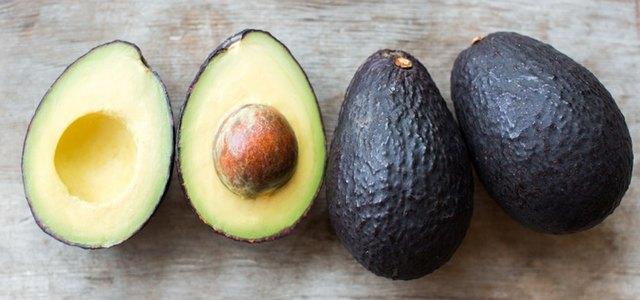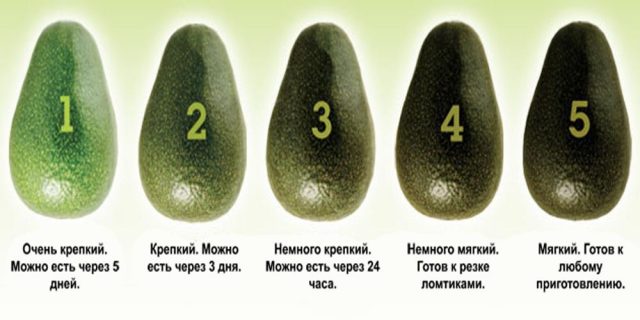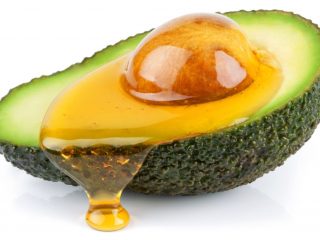Content
Avocado, a fruit also known as alligator pear, is gradually becoming an integral part of cooking in European countries, and not only as part of haute cuisine. Amateur cooks have also long ago appreciated the taste and benefits of this unusual fruit. However, the question of how to choose a ripe avocado in a store still arises from time to time. Therefore, it will be useful for connoisseurs of exotic foods to understand some of the nuances.
How to choose the right avocado in the store
Often, when people come to the store, they strive to finish their shopping faster, and therefore they choose many products thoughtlessly, focusing mainly on the appearance of the product. In the case of avocados, this tactic is absolutely not suitable, since it is not always possible to determine whether it is ripe or not by the color of the fruit’s skin.
Thus, the color of a ripe alligator pear can vary depending on the variety. There are several varieties of exotic fruit on the shelves of domestic stores:
- The California variety Hass is available year round.It has a rough, dark, almost black skin and a mushy pulp that is ideal for making guacamole, creamed soups and green butter;
- In winter, the Florida alligator pear appears in the store. The surface of the fruit always remains green and smooth and takes on a deeper shade when the fruit becomes ripe. The flesh of the Florida avocado is juicy and dense: it is worth choosing as an exotic ingredient for a salad or a side dish for meat dishes;
- The Pinkerton variety can also be purchased in stores throughout the year. It is easily recognized by its dark green pimply skin and very small pit, compared to other varieties. This avocado can be chosen for preparing almost any dish, including rolls.
How to determine the ripeness of an avocado
The color of the peel can still provide information about the ripeness of the avocado, if in addition you pay attention to other features inherent in the ripe fruit.
In addition to its color, the following will help you choose a ripe alligator pear in the store:
- pulp consistency;
- fruit stalk;
- the sound the bone makes.
You can increase the likelihood of choosing a ripe fruit if you pay attention not to one of the above signs, but to several at once.
How to tell if an avocado is ripe by the color of its skin
As already mentioned, the color of an avocado in itself is not a guarantee that the fruit you chose when purchasing will be ripe.However, the color of the peel still contains a certain clue about the ripeness of the fruit, as can be understood from the photo below.
- The light green color and very firm texture indicate that avocados take 4 to 5 days to reach ripeness.
- A darker shade of the peel with light green areas on the top of the fruit also indicates insufficient ripeness, requiring another 2 to 3 days.
- The uniform green color and elastic surface make it clear that the fruit is almost ripe and can be used for food after 1 day.
- The dark color of the skin and the soft surface from which dents quickly disappear indicate that the alligator pear is ready for consumption. During this period, it can be used to prepare various dishes.
- A day later, the even softer fruit can be eaten with a spoon or spread on sandwiches.
Very dark avocado skin may be a sign that the product has gone bad. At the same time, for the Hass and Royal Black varieties, this shade is quite common and means sufficient ripeness. Therefore, to choose an alligator pear in a store, you should rely on several methods for determining its ripeness.
How to choose a ripe avocado by softness
It is possible to choose a tasty avocado without completely ignoring the color characteristics of the product. Buyers who do not want to make the wrong variety determine whether the product is ripe by relying on tactile sensations.
The fact is that the pulp of the fruit at different stages of maturity has a different consistency. If the store has such an opportunity, you should take an alligator pear in your hands and try to determine its ripeness by touch:
- Press on the surface with a finger, measuring the effort.
- An avocado that is firm and does not leave a dent is likely to be unripe. The pulp of such a berry will be tasteless or bitter, so you should only choose it if use can wait a few days.
- An overripe fruit, when pressed, retains an indentation from the finger, and its pulp creates a loose and lumpy feeling. Choosing a product with such a texture would not be the best solution: the process of rotting has already begun in it, and it is not worth consuming.
- The skin of a ripe alligator pear dents when pressed, but quickly regains its shape. It is best to opt for a fruit with this texture, since it will be the most healthy and tasty.
How to choose a ripe avocado from a cutting
A good indicator that an avocado is ripe is its stem. In the store you should pay close attention to it when there are difficulties in determining ripeness by skin color or if the fruit seems too soft to the touch.
You can choose the ripest avocado in the store by tearing off a stalk and examining the condition of the fruit underneath, then checking the photo above.
- The dark brown color of the depression under the stalk indicates that the product is overripe and is not suitable for cooking.
- The light yellow tint of this area, on the contrary, will be a sure sign that the fruit is optimally ripe and ready to eat.
How to choose a good avocado by sound
You can easily choose an avocado in a supermarket based on its seed.Of course, for this you do not need to cut the fruit and check what it looks like from the inside. We are talking about the characteristic sound that a ripe alligator pear makes.
In an unripe fruit, the seed is not yet fully formed, and therefore it is very firmly attached to the pulp, and some effort is required to tear it off.
A ripe product is characterized by the fact that the stone in it is independently detached from the pulp and is able to move into the cavity of the fruit.
To choose an avocado in a store by sound, shake the fruit over your ear. The presence of a knock will be a sign of good ripeness. If there is no sound, then such an alligator pear should be allowed to ripen for another 3 - 4 days.
Which avocado should you not buy?
It may seem that choosing the most ripe and tasty avocado in the store is not so easy and that this will require a certain amount of time. However, the selection procedure can be significantly speeded up if you first eliminate all specimens that, for one reason or another, are not suitable for food:
- You should not buy very hard, light green fruits in the store. Although alligator pears tend to ripen for some time after they are picked from the tree, products that are too dense have a fairly low chance of this happening. They will not have time to reach the desired state before they begin to deteriorate.
- Brown spots or dents on the surface indicate the beginning of rotting.The quality of such a product leaves much to be desired, so it would be wise to choose another alligator pear option.
- It is advisable to give preference to fruits that are stored outside the refrigerator. The recommended temperature for storing avocados is from 2 to 12 °C, since this exotic fruit is heat-loving. Lower rates will cause fruit spoilage.
- It would be inadvisable to choose fruits with damaged skins and scratches - they can become unusable within 10 - 12 hours after purchase in the store.
If you choose an avocado with the utmost care, the risk of spending money on a spoiled product will be significantly reduced.
Conclusion
Choosing a ripe avocado in a store can be difficult at first glance. If you follow the basic recommendations when purchasing a product, then purchasing ripe and tasty fruit will not be difficult. A video on how to choose a ripe avocado in a store will help organize the information from the article and clearly demonstrate how to put the information received into practice.















